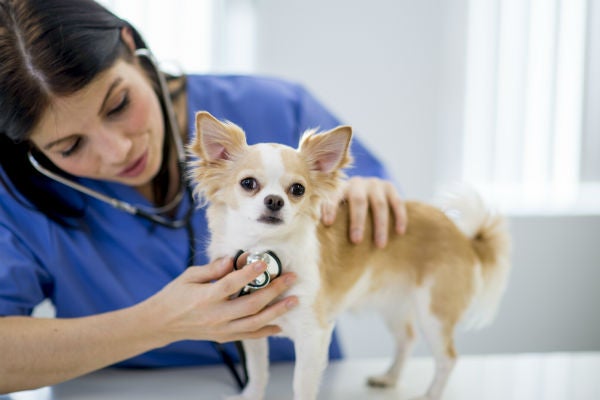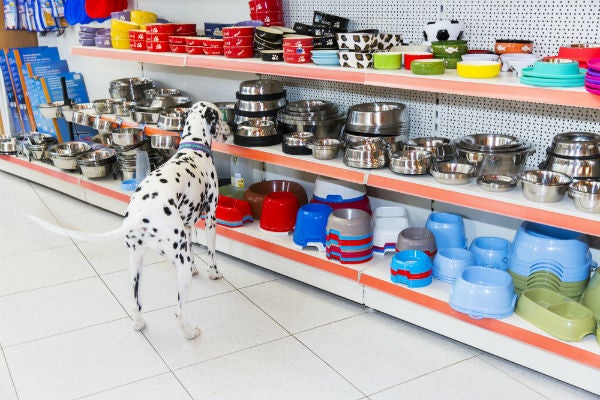
We all expect to save and set aside money for big expenses, like a new car or the down payment on a house. But, what many of us don’t consider, when we’re oohing-and-ahhhing over that adorable new puppy, is the actual cost of dog ownership.
It’s important to take into account how much of your budget will go toward caring for your dog over its lifetime. It may not be as much as college tuition, but it’s not pocket change either. A study conducted in the United Kingdom found that virtually all pet owners (98 percent) drastically underestimated the lifetime cost of owning a pet.
Of course, the companionship and bond between dog and human is priceless. But if you fail to map out the extent of the expenses you’ll incur, an unforeseen expense may have you choosing between caring for your dog and keeping the lights on. In short, owning a dog is a big investment.

Average Costs by Dog’s Size
Most sources calculate the cost of dog ownership by the size of the dog. According to an ,” the lifetime costs are as follows:
- Small dog: $15,051 (average life expectancy of 15 years)
- Medium dog: $15,782 (average life expectancy of 13 years)
- Large dog: $14,480 (average life expectancy of 10 years)
put the costs of dog ownership at quite a bit higher. Including all possible expenses, they estimate the lifetime cost of a dog to be anywhere from $17,650 a year to a staggering $93,520, depending on size, breed, and services required.
Where Is the Money Going?
Health: Routine vet visits, once or twice a year, including wellness checkups, vaccines, lab tests, and dental care , depending on your dog and where you live. This doesn’t include emergencies or medications your vet may prescribe.
Grooming: This depends a great deal on the breed. A Basenji, for example, almost keeps himself clean and requires very little in the way of grooming. A Maltese, on the other hand, may require expensive, professional grooming. Grooming your dog at home can run as low as a one-time $25 brush purchase to as much as $1,400 per year for frequent professional grooming.
Food: Whether you feed supermarket dry food or a raw food diet, costs can run from about $120 per year to as much as $900 per year.
Toys and treats: For some dogs, an old tennis ball and a sock are the best toys in the world. But most pet owners don’t stop there. In fact, as of 2016, dog owners were spending between $35-$250 per year just on toys and treats.
Then there’s licensing, collars, leashes, crates, training, supplements, dog walkers, and emergency vet fees, which Forbes took into account when coming up with its heart-stopping numbers.

Who Spends the Most?
Move over, Baby Boomers. Millennials have more pets than you do. In fact, 57 percent of millennial households own a pet and the generation is 77 percent more likely than other generations to get a pet before they marry or have children. Millennials even tie the purchase of a home to their pets. One-third of millennials, which is the largest group of home buyers, buy a new home to have more space or a better yard for their dog. This age group also spends more on their dogs, with purchases of pet care items, toys, treats, and vet visits.
From that expensive toy you couldn’t resist to dog park licenses, a dog-sitter, limited-ingredient diets and all of the ordinary expenses, the cost of dog ownership adds up. Be prepared to forego a few treats for yourself, and sock some money away to cover any eventualities that come along with owning a dog. After all, you not only love and care for your canine BFF, you’re also responsible for him every day of his life.
